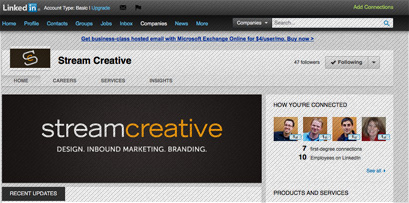We just got back from attending Inbound in Boston and I am amazed and overloaded with so many great takeaways from the speakers. One of my favorites was sitting in a session with Paul Roetzer whose topic was on Metrics that Matter. Lots of great takeaways here and one stat really stood out. According to Capgemini Consulting, 90 percent of companies lack the necessary skills to capitalize on the digital world of social media, mobile, internal social networks, automation, and analytics. That means a majority of companies run the risk of falling behind as the digital world surges forward and continues to adapt to customer behavior and consumer demands. Customers are online, and that is where successful companies must go.
The digital world continues to change, and the marketing mix has just gotten impressively bigger, but it is also better. Every business can leverage digital marketing to grow. Here are the tools you need to bring your customers to your website, engage them, convert them, and keep them happy.
Bring More People to Your Website
Digital Ads:
Digital ads are easy and effective ways to attract people to your website, and there are a number of different types of digital media options. Pre-roll video ads play before the growing amount of video content online, you can run ads on social media sites, through Google and other search engines, and mobile ads to capture those customers who use their phone like a computer. Ad networks allow you to effectively pinpoint your audience, based on interests, job titles, market or niche. When using these ads to compliment an inbound marketing campaign, you will drive more customers back to your website, offer or product.
Search:
Organic search is a great way to bring new customers to your website and introduce them to your company. Most of the people who discover your site through search are going to be more interested in learning information and researching the problems they are facing than actually buying. This is who you want to begin to build a relationship with, so they will turn to you when they are ready to buy. These people are going to be doing searches based upon particular keywords, and the more you are able to work in those keywords through your blog and website content, the easier it will be for visitors to find you. Adword campaigns are also easy to incorporate into your marketing campaign to help drive traffic towards your site by improving your visibility in searches.
Engage Your Visitors As They arrive and Convert Them to Customers
Automation:
Building a successful digital marketing strategy is about building a relationship with your site visitors. You want to reach out to them at key points in their buyer’s journey and encourage them to continue on towards becoming a paying customer. Marketing automation makes this significantly easier for you. Now you generate automatic, personalized emails based on what page visitors have viewed on your website. You can automatically welcome people to your site and thank them for subscribing to feeds. Those who have viewed your pricing page can receive another email that has been crafted specifically for those who are reaching the decision stage of the buyers’ journey. By compiling information about what your clients are doing on the site, you can create workflows to automatically engage the visitor and convert them easier into new clients. Companies like HubSpot make it easy to set up these automatic workflows and improve engagement.
Email:
There are more than 3.2 billion email accounts today and 95 percent of online consumers use email. It is also worth noting that 77 percent of people prefer email when it comes to marketing communications. Email lets you cultivate your relationship with your customers by sending personalized emails. You can contact them when they reach specific points in the buyer’s journey, as indicated by certain actions on your website. These emails are perfect for opening up lines of communication. Most marketing automation software have this tool built in and make it easy to set up email workflows. Other platforms, such as mailchimp and constant contact also can help you track your leads and reach them with emails at that perfect moment. Emails make it easy for customers to ask questions and get in contact with someone at the company when they are ready to make a purchase. They can also be good reminders to customers about the value of the brand.
Mobile:
Mobile internet usage continues to grow. About 1/2 of all local searches are performed on mobile devices and 73 percent of mobile users search on their phones. If your digital marketing campaign does not take into account visitors who are finding your site on mobile devices, you are potentially losing countless customers. A mobile optimized site will take into account information that mobile users are more likely to want, such as phone numbers or addresses while also offering responsive design.
Websites:
All of these efforts to drive traffic towards your site will not make a difference unless your website is user friendly. When you bring prospects to the site, they are going to decide in about 1/20th of a second whether or not your site is helpful. This is your business' first impression. They will decide if this is a company with whom they are interested in doing business. If they have trouble finding the information or navigating the site, they are just going to leave. You want your design to be fully responsive to your user, so they can view the site easily and with minimal scrolling, no matter what type of device they are on.
Keep Your Existing Customers Happy
PR:
The digital world has changed what customers expect from companies. Customers now want to develop relationships with those behind the business and feel as though their individual needs and questions are being met and answered. Those responsible for engaging with the public must now work to harness this desire for a personal connection and take it to digital media. Customers do not call customer complaint hotlines, they take their problems to Twitter or they post a story about a bad interaction on Facebook. It is up to PR managers to monitor the brand and reach out to customers who have had a bad experience. Correct the problem and show this customer, and everyone who is watching the interaction, that this is a brand who cares.
Analyze Your Campaign, Refine, and Improve It
Analytics:
Analytics tells you what is working, and what is not. Without analytics, you run the risk of just spinning your wheels: wasting time and energy on a marketing campaign that is not producing results. Although 76 percent of marketers realize the importance of analytics, few believe they are doing it well. If you are not analyzing your campaigns, you are missing a huge piece of digital success. The beauty of digital marketing is that you do not even need to wait until the end of your campaign to see how it is going. By measuring the success of your various strategies through Google analytics or other marketing software analytics, A/B testing, and measuring lead conversions, you can monitor your campaigns and adapt and refine them for success as you go.
With these tools, you have the power to build a successful marketing campaign. They will help you drive traffic towards your site while also engaging your visitors and converting them into leads. If you are struggling to get your marketing campaign off the ground, partnering with the right marketing agency can give you the boost you need to start bringing in customers.
What digital tools are you using to achieve marketing success?





 That’s a pretty thought provoking statistic, shared with us by Pandora at the
That’s a pretty thought provoking statistic, shared with us by Pandora at the 